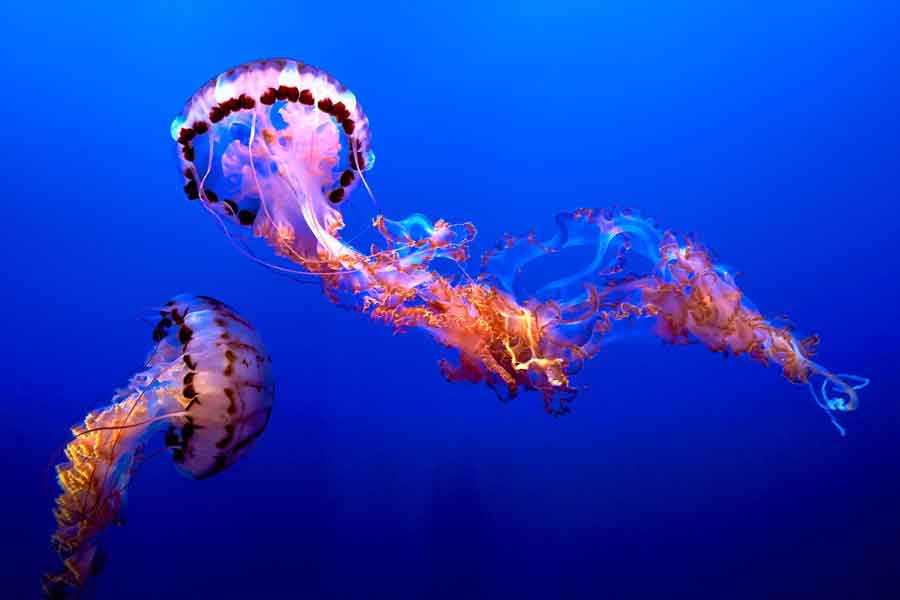
Jellyfish, which have a bad reputation among humans, inhabit almost all the seas of the planet. The body of these animals is composed of 98% water, which is why they are called «jellyfish» or «living water.»
There are about two hundred species of jellyfish, with various forms. Their body consists of a main bell-shaped mass from which groups of tentacles hang, along with hundreds of individual threads. While some species can reach a maximum size of two centimeters, others like the Arctic Cyanea (Cyanea arctica) can have a bell diameter of 2.5 meters, and their tentacles can measure up to seventy meters long.
The exact nature of the toxin in the jellyfish’s tentacles, which is not deadly to humans, is still a mystery. However, the mechanism by which it is injected has been understood. The jellyfish uses layers of nematocysts on its skin to paralyze and kill its prey. When it comes into contact with the skin of a small fish, the nematocysts suddenly contract at a rate of twenty meters per second, expelling multiple projectiles. One of these is a filament that coils and sticks to any protrusion it touches.
The functions of the nematocyst are similar to those of a whaling harpoon. A barbed tube touches the prey and penetrates its skin, allowing the venom to enter through the tube’s pores. Then, the tentacles contract, pulling the prey towards the jellyfish’s mouth, where specialized oral tentacles guide the food into the internal cavity.
While most jellyfish are harmless to humans and many only cause an annoying burning sensation, it is always advisable to keep a safe distance from these strange creatures. Nevertheless, it is a special attraction for divers to be able to observe them gliding along the seabed with their undulating movements, performing a dance filled with sensuality. Water moving within water, life finding its way and manifesting in various forms.
«One cannot defend what one does not love, and one cannot love what one does not know.»

